In the complex healthcare environment, the efficiency and smooth running of operations is critical for providing superior patient care and financial sustainability. At the core of this efficiency is Patient Access Management (PAM), a key element of Revenue Cycle Management (RCM). This in-depth exploration examines the interrelated nature between PAM and RCM in healthcare, outlining its importance, processes, and the revolutionary influence it has on the healthcare sector.
Within the complex and ever-changing field of healthcare, the fragile balance between excellent patient care and stable financial practices is the basis of operational achievements. Orchestrating flawless processes is not a mere desire; instead, it is a critical factor dictating the quality of service and the economic capacity of medical establishments.
Patient Access Management (PAM) holds a key position amid this equilibrium, offering a significant component of Revenue Cycle Management (RCM). The following venture investigates the deep-seated synergy between PAM and RCM in the healthcare industry, exploring their mutual dependency, uncovering their operational details, and comprehending the influential importance they possess on the healthcare environment.
As we further examine the intricacies of this closely linked relationship, we are able to witness the far-reaching implications of effective PAM, encouraging operational excellence and elevating care delivery to higher standards.
Understanding Patient Access Management
Patient Access Management refers to a range of tasks and procedures associated with the initial encounter between medical practitioners and patients. It covers patient enrollment, organizing appointments, confirming insurance eligibility, obtaining pre-approval, and handling money matters. In essence, it ensures a smooth and effective experience for both patients and health groups, from the point a patient seeks treatment to finalizing the financial reimbursement.
Efficiency in Revenue Cycle Management
The intricate healthcare revenue cycle includes multiple steps, starting from patient enrollment and providing care, up to billing, claims handling, and remuneration. Optimal RCM ensures healthcare organizations are justly compensated for services they render, avoiding revenue losses, reconsidering rejections, and improving fiscal outcomes.
The Role of Patient Access Management in RCM Efficiency

Patient Information Must be Accurate
Patient Access Management guarantees the collection of precise and comprehensive patient information in the course of registration. This forms the basis for accurate invoicing, submission of claims, and patient identification, avoiding mistakes and diminishing the likelihood of claim rejections.
Insurance Verification & Pre-Auth
PAM verifies the coverage of its beneficiaries and acquires the appropriate pre-authorizations, thus smoothening the claims procedure and limiting hitches resulting from insurance matters.
Reduction in Front-End Denials
By implementing effective patient access management, denials at the front-end can be minimized. With the proper authorization and paperwork in order, burdensome rework and its accompanying expenditure can be avoided.
Financial Clearance
PAM evaluates an individual’s economic responsibilities, ensuring clarity of co-pays, deductibles, and other expenses beforehand. This transparency builds confidence and minimizes the possibility of unpredicted expenses when it comes to billing.
Improved & Streamlined Workflows
PAM streamlines appointment management, limiting missed appointments and optimizing resource utilization. This effective system facilitates efficient healthcare provider capacity.
Enhanced Patient Experience
Efficient PAM translates to a streamlined patient journey, from registration to payment. This satisfactory experience promotes patient fulfilment and encourages patient allegiance.
Technological Empowerment in Patient Access Management
The digital age has drastically changed the healthcare terrain, and PAM is no exception. Comprehensive healthcare IT solutions and Electronic Health Records (EHR) platforms have converted PAM from manual approaches to automated flows. Sophisticated solutions facilitate rapid insurance validation, effortless appointment scheduling, and instantaneous access to patient data.
While the capacity of PAM is highly promising, interoperability, data security, and individual privacy must be carefully considered. In the future, PAM will be enhanced by the incorporation of telehealth, AI, and predictive analytics in order to expedite patient engagements and optimize revenue cycles. Hence, making it efficient in RCM healthcare.
Learn how Pain Management Group Revenue Leaps by 30% with Streamlined Claims Filing.
Conclusion: PAM – The Efficiency Pillar in RCM Healthcare
Within the immensely complex landscape of healthcare, where quality care and financial stability go hand in hand, Patient Access Management occupies a distinct position as an impetus of efficiency. Rather than just performing basic bureaucratic functions, this domain of Revenue Cycle Management holds a fundamental influence over the entire healthcare system, from initial contact with patients to financial clearance.
Patient Access Management optimizes the patient experience, guaranteeing precise data, harnessing technology all the while leading the healthcare organization to sound RCM outcomes, thereby improving not only care delivery but also financial stability and the collective productivity of the healthcare ecosystem.
As the healthcare industry continues to develop, Patient Access Management proves itself to be an integral component which represents a streamlining, patient-focused approach to Revenue Cycle Management.








